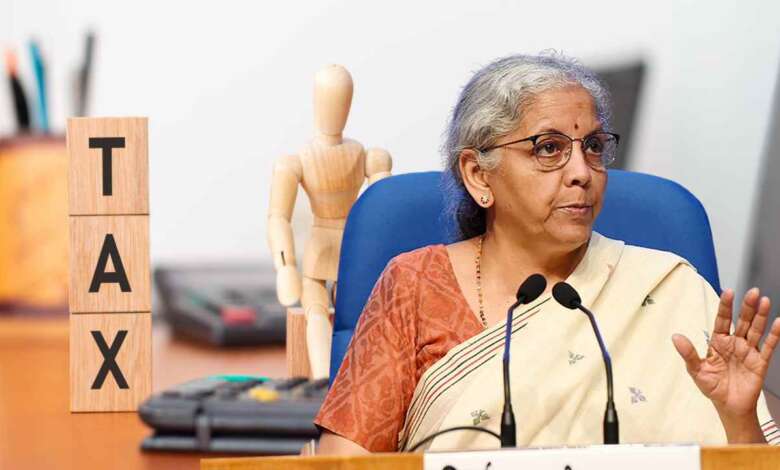Income Tax: How Salary Up to ₹14.65 Lakh Can Be Tax-Free! View New Regime Rules

In a significant relief for salaried taxpayers, announcements from Budget 2025 indicate that under specific conditions, individuals with an annual Cost To Company (CTC) of up to ₹14.65 lakh could end up paying zero income tax. This is made possible by a combination of enhanced rebates in the new tax regime and certain employer contributions, effective from Financial Year 2025-26 (Assessment Year 2026-27). Let’s break down these new rules and the calculation.
Key Changes in the New Tax Regime (FY 2025-26):
The new tax regime, applicable from April 1, 2025, introduces several taxpayer-friendly amendments:
- Increased Tax Rebate Limit: Individuals with a net taxable income of up to ₹12 lakh will pay no tax. This is due to an increased rebate of up to ₹60,000 under Section 87A.
- Enhanced Standard Deduction: The standard deduction for salaried employees and pensioners has been raised from ₹50,000 to ₹75,000. This directly reduces taxable income, effectively making salary income up to ₹12.75 lakh (₹12 lakh + ₹75,000) tax-free for those who can bring their taxable income down to ₹12 lakh after this deduction.
- Revised Income Tax Slabs (FY 2025-26):
- Up to ₹4 lakh: Nil
- ₹4,00,001 to ₹8,00,000: 5%
- ₹8,00,001 to ₹12,00,000: 10%
- ₹12,00,001 to ₹16,00,000: 15%
- ₹16,00,001 to ₹20,00,000: 20%
- ₹20,00,001 to ₹24,00,000: 25%
- Above ₹24,00,000: 30%
How Can a ₹14.65 Lakh Salary Become Tax-Free?
Achieving zero tax on a ₹14.65 lakh CTC involves specific components in your salary structure and employer contributions:
- Basic Salary Component: The calculation relies on a certain portion of your CTC being designated as Basic Salary (e.g., 50% of CTC).
- Employer’s EPF Contribution: If your employer contributes 12% of your Basic Salary to the Employees’ Provident Fund (EPF), this amount is exempt from tax.
- Employer’s NPS Contribution: If your employer contributes 14% of your Basic Salary to the National Pension System (NPS) under Section 80CCD(2), this amount is deductible from your gross taxable income.
Illustrative Calculation:
Let’s assume an annual CTC of ₹14,65,000.
Further, assume Basic Salary is 50% of CTC = ₹7,32,500.
- Employer’s EPF Contribution (12% of Basic): ₹7,32,500 * 12% = ₹87,900 (Exempt from tax)
- Employer’s NPS Contribution (14% of Basic): ₹7,32,500 * 14% = ₹1,02,550 (Deductible under Sec 80CCD(2))
Now, let’s calculate the taxable income:
Total CTC: ₹14,65,000
Less: Employer’s EPF contribution (exempt): ₹87,900
Salary for tax purposes: ₹14,65,000 – ₹87,900 = ₹13,77,100
From this amount, further deductions are applied:
Less: Standard Deduction: ₹75,000
Less: Employer’s NPS contribution (deduction): ₹1,02,550
Net Taxable Income:
₹13,77,100 – ₹75,000 – ₹1,02,550 = ₹11,99,550
Since this Net Taxable Income (₹11,99,550) is below the ₹12 lakh threshold, the individual qualifies for a full tax rebate under Section 87A, resulting in zero income tax liability.
Important Considerations:
- Conditional Benefit: This zero-tax liability is conditional upon the specific salary structure, particularly the Basic Salary component and the employer making EPF and NPS contributions at the assumed rates. Variations will change the outcome.
- Default Regime: The new tax regime is the default option. However, taxpayers (without business income) can choose between the old and new regimes each year, opting for whichever is more beneficial.
- Professional Advice: It’s always prudent to consult a tax advisor to understand how these changes apply to your specific financial situation and to make informed decisions.
These updates in the new tax regime for FY 2025-26 aim to provide significant relief to the salaried class, boosting their disposable income and simplifying compliance.